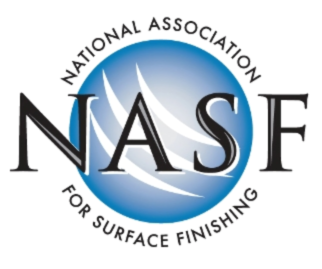
215 Judson Street
Elmira, NY 14901
(607)732-2909
|
Protecting and improving surfaces for more than 30 years
|

|
Surface Finish Technologies, Inc. 215 Judson Street Elmira, NY 14901 (607)732-2909
|
|---|
| Home | Products |
Contact |
Order |
Shipping |
| Process List | Material Compatibility | Process Thickness |
|
| Process | Specifications | Min | Max | Typical | Comments |
|---|---|---|---|---|---|
| Anodize | Mil-A-8625 Type II ASTM B580 |
0.0001” | 0.0003” | 0.0002” | Protective finish that builds into the aluminum surface as much as it builds up. Comes in a wide variety of colors. Needs a contact point. |
| Anodize, Hard | Mil-A-8625 Type III AMS 2469 |
0.0008” | 0.002” | 0.001” | Also referred to as Hard Coat, hard anodizing provides extremely protective finish. Extremely hard, and can be impregnated with teflon for greater lubricity. |
| Black Oxide | Mil-C-13924 AMS 2485 |
n/a | n/a | NONE | Conversion coating that forms a protective oxide layer on the surface of the part with minimal dimensional change. Normally performed on steel, stainless steel, and copper. Normally an oil is applied to prevent red rust corrosion. |
| Cadmium | QQ-P-416 AMS 2400 ASTM B766 |
0.0002” | 0.0005” | 0.0003” | Provides excellent corrosion resistance and has the ability to be sealed with a chromate to enhance corrosion protection and give it color. |
| Chemical Conversion | Mil-C-5541 ASTM B449 |
-0.0002" | n/a | -0.0001" | Chemical Conversion, also known as chem film, chromate, or irridite. Comes in two colors, clear and yellow. Also there is a trivalent option available for RoHS compliance. Gives aluminum affordable corrosion protection and works as an excellent base for paints and powder coatings. |
| Chrome | QQ-C-320 | 0.00001” | 0.002” | VARIES | Chrome can either have a satin or a bright finish. Chrome offers extreme corrosion and wear protection. A flash (0.00001) is normally used for decorative finishes, while thicker coatings have more satin finish and is common in industrial use. |
| Copper | Mil-C-14550 AMS 2418 ASTM B734 |
0.0001” | 0.002” | 0.0003” | Copper provides an excellent underplating for nickel and chrome plating. It is commonly used to mask surfaces from convection hardening. |
| Electroless Nickel | Mil-C-26074 ASTM B733 AMS 2404 |
0.00005” | 0.005” | 0.0003” | Electroless nickel offers an extremely uniform plating over all regions of the parts. Can be either semi bright or bright. The dimension can be controlled better than most plating processes. |
| Electropolish | -0.0001" | -0.004" | -0.0005" | Electropolish is a way to electro-chemically remove material from the surface. Normally performed on stainless steel (300 & 400 series) and aluminum; electropolishing often leaves the surface bright, shiny, and free of scratches. As a result of the process, the surface of the substrate is extremely passivated; resulting in optimum corrosion resistance offered by the alloy. | |
| Nickel Plating | QQ-N-290 AMS2403 ASTM B689 |
0.00005” | 0.001” | 0.0002” | Conventional nickel plating is becoming less the norm to it's electroless counterpart. Comes in dull (Sulfamate), bright (Watts), and as a strike (Woods). Typically used as an undercoat for other plating processes. |
| Passivate | QQ-P-35 AMS 2700 |
n/a | n/a | n/a | Passivation removes the free iron from the surface of stainless steel in order to prevent any corrosion of said iron. There is no dimensional change on the parts. |
| Tin | Mil-T-10727 ASTM B545 |
0.0001” | 0.0012” | 0.0003” | Tin plating can be bright (shiny) or dull (matte). Tin provides excellent corrosion protection, but is most notable for its solderability. |
| Zinc | QQ-Z-325 ASTM B633 AMS 2402 |
0.0001” | 0.001” | 0.0003” | Zinc plating provides inexpensive and attractive corrosion protection. The zinc can be sealed with a chromate to provide color and additional corrosion protection. |

|
| © 2003 - 2025 Surface Finish Technologies, Inc. |